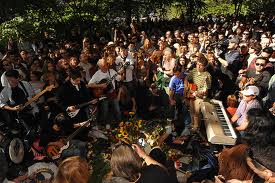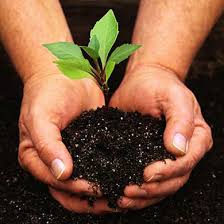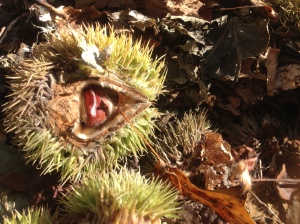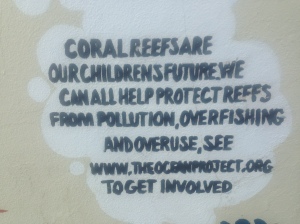It’s one of my odd fears: ringing the doorbell, bottle of wine in hand, only to find I’ve shown up on the wrong day.
Last Wednesday was one of those days. Only I wasn’t going to a party, rather the Science Cafe at the American Museum of Natural History. It’s the Museum’s brilliant ploy to convert the curious and wannabe’s into card-carrying nerds.
It was a perfect fall day, comfortably cool as my walk through Central Park accelerated to the distant strumming of guitars. Turns out it was John Lennon’s birthday and Strawberry Fields was playing host to a rocking jam session of musicians and a swaying crowd of back-up singers.

This was one of those perfect NYC moments of peace, joy, and connection. Even the undercover cop/parks department garbage picker I overheard talking to his command had nothing to report.
Entering the Museum for this after-hours event was a whole other matter. Like solving the Rubik’s Cube, it took rounding the grounds a few times before finding an open door and receptive guard. Following an arrow landed me in a closed exhibit filled with 3 foot hominids. It was a bit freaky. Lost, I was easy prey and hoped the Neanderthal’s in their dinosaur bone hut didn’t come alive like in the movie ‘Night at the Museum’.
Pointed in the right direction by the now laughing guard, I was still lost – kind of. Entering a half-filled lecture room with name tag wearing young people was not the buzzy wine/beer-swilling space I normally associate with the Science Cafe. But safe from Neanderthals, I slunk into a comfy seat to play scientist and observe.
They say, you always end up where you are supposed to be. I had ‘crashed’ a Conservation Conference lecture on research and action led by four brilliant panelists.
We regular folk don’t always think conservation amidst environmental debates. Anti-frackers seek to shatter beliefs that drilling is the best way to secure future energy sources (an on-going NY ‘action’) – but not necessarily about using less. Meanwhile many of us are just overwhelmed by the effects of climate change and global natural disasters from raging forest fires to never-ending draughts to tornadoes twirling in unexpected places to devastating hurricanes like Sandy having the audacity to slam into NYC. Victims are left shaken and outraged over the result of climate unrest. At least till it’s all over.
They say: when climate conditions gets tough, the tough travel as ecotourists. Here’s my packing tip to include along with hiking boots and organic snacks (I greatly modified – but hopefully not too much) from Stanford’s Rodolfo Dirzo when asked about ecotourism:
- It’s a great thing: indigenous people make a living while maintaining their environmental culture – it’s an ecological win-win!
- And yet… young people employed as van drivers, wait staff, guides, etc. in the hospitality ecosystem are trading in their knowledge about the environmental ecosystem for customer service skills.
They no longer need to know how to care for/understand/support the flora and fauna tourists pay to see. Which may not be bad – until the realization hits: who will know when a species is threatened – and when an ecosystem or species is at risk, how to nurture it back to health?
And who can blame these new drivers and front desk clerks? Don’t we all follow the money trail?
Costa Rica, according to Wikipedia had 2.2 million visitors in 2011! Imagine the money and ruts that trail leaves. Imagine the impact even if visitors live the mantra:
“Take Nothing but Pictures, Leave Nothing but Footprints and Waste Nothing but Time”
Ecotourism saves threatened environments and local knowledge, so what’s the answer?
Personally I think it comes back to education and making it as sexy to know about the ecosystem as to know how to drive a van. Imagine if every adventure traveler swooned over that same van driver sharing her knowledge about the local flora and fauna along with the local watering holes. And she shared how a traveler’s lifestyle impacts the local natural wonders with the same verve as recommending the best dinner spot.

It seems it’s all about following the money trail crafted by hiking-boot-gortex-wearing ecotourists. If these same tourists want flora-fauna ecosystem knowledge, the locals will learn. Bottom line is: with preservation of land and learning we can get what we all want: to travel forever uncovering the secrets of the serendipity trail.
Optimistic and naive, maybe. But what do you think are other options?
To read more about human impact on climate change: http://www.sfgate.com/science/article/Population-growth-increases-climate-fear-4781833.php




